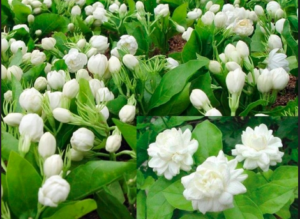If you think climate change is tough on coal,
Take a look at cotton and perfume
Floods, heat waves, droughts: these extreme weather events announce a dramatic shift in what our lives will be like as a result of climate change. The destructive impacts are typically sudden and clear. Floods usually pass in a short time; heat waves and droughts can last for extended periods — months to years.
Other impacts from climate change affect our day-to-day lives with less drama.
Take, for example, the effects of climate change on cotton and perfumes.
Cotton
Upland cotton is short and coarser than Pima cotton and it is the main ingredient of cheap clothing, including denim jeans, and basic hygiene products, like gauze pads, cloth diapers and tampons. In the US, upland cotton is grown predominately in Texas so whatever happens to Texas weather has significant impacts on upland cotton markets.
Recent reports on that market in 2022 reveal a disaster unfolding with the biggest loss of cotton on record. Farmers in Texas had to abandon 74% of their planted crops because of heat and parched soil, and resulting megadrought worsened by climate change. Prices increased accordingly. In the US, cloth diapers rose by 21%, cotton balls by 9%, and tampons by 13%. Since Texas is the main source of upland cotton in the US, and third biggest producer in the world, those price increases were felt across the globe. At the same time, severe flooding, exacerbated by climate change, destroyed half of the cotton crop in Pakistan, the 6th largest producer in the world.
The future for upland cotton is not bright. It is projected that heat and drought, thanks in large part to climate change, will continue to impact the crop, and its prices. That prognosis turns in part on the diminishing supply of water in the southwest from the Ogallala Aquifer that stretches across eight western states, from Wyoming to Texas. The Aquifer is being dried up, like the Colorado River, so much that the Ogallala Aquifer is now being considered a non-renewable resource. That is remarkable .
Disturbingly, this same region was the site of the infamous 1930s Dust Bowl where more than two million farmers had to abandon their land because of severe drought and destructive farming practices.

Cotton
Just as the Aquifer is drying up, so too may be the extensive government subsidies provided cotton farmers since the 1930s. Over the past five years, cotton farmers have been paid annually on average about $1 billion dollars in crop insurance subsidies. The cotton farmers argue that more government relief is necessary to soften the conditions generated by climate change. But others question whether it makes economic sense to continue to grow cotton in Texas when the climate is making it too difficult. Instead we may all be wearing polyester instead of cotton.
Unfortunately polyester is a petroleum based synthetic fiber with its own adverse environmental impacts.
Perfume
As an example of a less functional product we have perfume which is also subject to significant impacts from climate change. Flagrant flowers, which are harvested to make perfume, grow in Grasse, France, the perfume capital of the world. While the fields around Grasse have been filled since the 17th century with may rose, tuberose, lavender and jasmine, climate change is transforming those fields.
Much like wine, the quality and specific fragrance of a perfume depends on its soil, sun, geographic location and/or harvesting technique. Alter those conditions and you lose the unique ingredients of Grasse perfumes. And climate change is indeed altering those conditions.

Jasmine
Droughts, heat waves and excessive rainfall have created havoc with the Grasse perfume crops. Extreme weather events that used to be experienced every 50 to 100 years are now occurring every two years. Last summer, for example, as a result of an extreme drought, perfume producers lost about half of their harvest. Winters are now warmer, and springs colder.
With increases in extreme weather events expected to continue, the very culture and way of life in Grasse is under threat. Families have been harvesting the flowers for hundreds of years and in 2018 Unesco entered the perfume region as an Intangible Cultural Heritage. Losing their crops would be earth shattering for the people of Grasse.
Conclusions
There is a growing recognition that we all have some responsibility to help solve the challenges facing coal mining communities as the world withdraws from burning coal in order to save the planet. The growing challenge will be: What do we do to help those communities that will lose their livelihood because the weather has changed, in fundamental, irretrievable ways.
What’s to come of the cotton farmers in Texas and the perfume producers in Grasse?
Sources:
Coral Davenport, “Climate Change Withers Cotton, And Prices Soar,” The New York Times (19 Feb 2023). nyti.ms/3krDMuc
Mélissa Godwin, “Climate crisis brings whiff of danger to French perfume capital,” The Guardian (18 Feb 2023). bit.ly/3XWcPwj
“The Sustainability of Polyester Vs. Down & Feather,” DOWN (April 2020). bit.ly/3ZfdtG7
Eleanor Beardsley, “In France’s Perfume Capital Of The World, There’s A World Of Beautiful Fragrance,” NPR (25 Sept 2021). n.pr/41n2rk8


No comments yet, add your own below